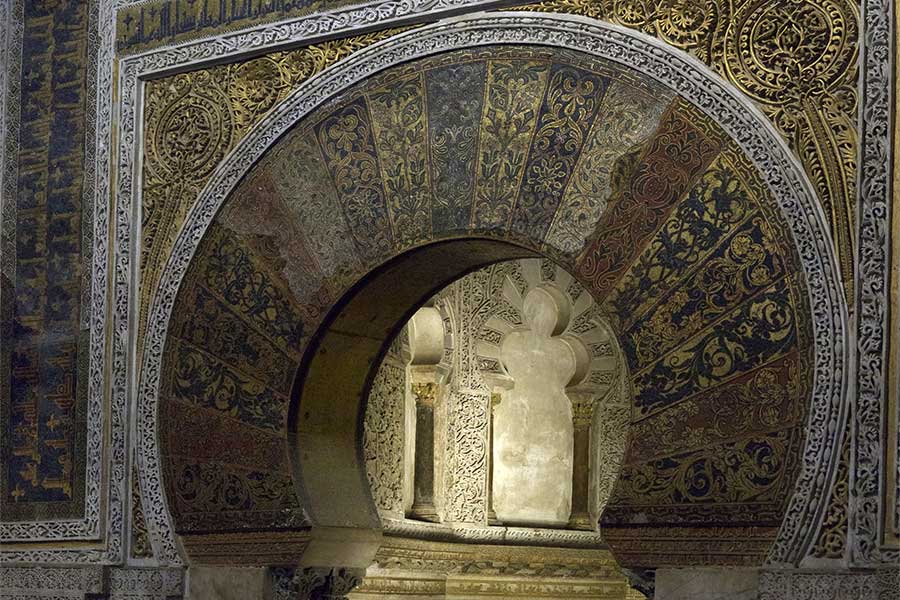Mihrab at the Great Mosque of Córdoba
Glaire Anderson
Synopsis:
This talk briefly introduces the architecture and decoration of the mihrab of the Great Mosque of Córdoba. Taking the form of a discrete chamber, and richly ornamented with carved marble and gold mosaics, the mihrab is the focal point of the mosque’s prayer hall as expanded during the reign of the second Andalusi Umayyad caliph, al-Hakam II (r. 961-76).
Worksheet:
A worksheet for this video is available here.
Also visit the Khamseen Worksheets page here.
References:
Calvo Capilla, Susana. “The Visual Construction of the Umayyad Caliphate in Al-Andalus through the Great Mosque of Cordoba.” Arts 7, no. 3 (2018): 36. ![]()
Dodds, Jerrilynn D. “The Great Mosque of Córdoba.” In Al-Andalus: The Art of Islamic Spain, edited by Jerrilynn D. Dodds, New York: Metropolitan Museum of Art, 1992, 11–25. ![]()
Khoury, Nuha. “The Meaning of the Great Mosque of Cordoba in the Tenth Century.” Muqarnas XIII (1996): 80–98. ![]()
Marfil, Pedro. “The Great Mosque of Cordova.” In The Splendour of the Cordovan Umayyads. Exhibition in Madinat Al-Zahra, Cordova, from 3 may to 30 September, 2001. Cordoba: Consejería de Cultura de la Junta de Andalucía for Fundación El Legado Andalusí, 2001, 45–48. ![]()
Ruggles, Fairchild D. “From the Heavens and Hills: The Flow of Water to the Fruited Trees and Ablution Fountains in the Great Mosque of Córdoba.” In Rivers of Paradise : Water in Islamic Art and Culture, edited by Sheila Blair and Jonathan Bloom, New Haven: Yale University Press, 2009, 81–103. ![]()
Citation:
Glaire Anderson, “The Mihrab of the Great Mosque of Córdoba,” Khamseen: Islamic Art History Online, published 19 October 2020.

Glaire Anderson is Senior Lecturer in Islamic Art at the University of Edinburgh, and Founding Director of the Digital Lab for Islamic Visual Culture & Collections (DLIVCC). She is an award-winning author of two monographs: A Bridge to the Sky: Art and Science in the Age of Ibn Firnas (Oxford University Press, 2024), and The Islamic Villa in Early Medieval Iberia: Aristocratic Estates and Court Culture in Umayyad Cordoba (Ashgate, 2013). Besides numerous articles on the architecture, art, and history of medieval Islamic Iberia and North Africa, she also co-edited The Aghlabids and Their Neighbors (Brill, 2018) and Revisiting al-Andalus: Perspectives on the Material Culture of Islamic Iberia and Beyond (Brill, 2007).


